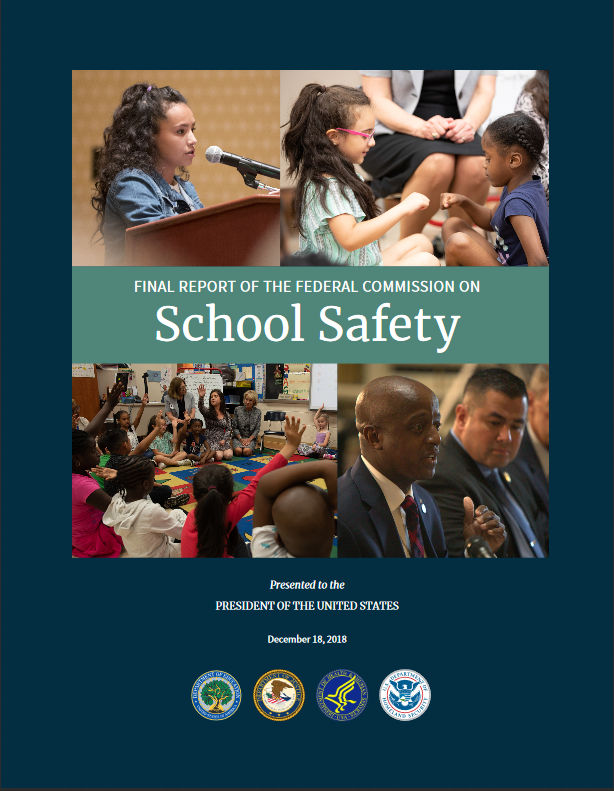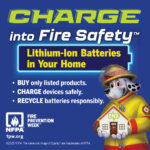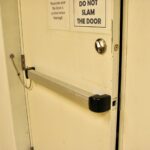 Earlier this week, the Federal Commission on School Safety released it’s final report (available here), making recommendations on multiple aspects affecting safety and security in schools. These recommendations are not required by law to be implemented, but may help to shape future requirements or best practices.
Earlier this week, the Federal Commission on School Safety released it’s final report (available here), making recommendations on multiple aspects affecting safety and security in schools. These recommendations are not required by law to be implemented, but may help to shape future requirements or best practices.
When reviewing this report, I went straight to Chapter 16 – Best Practices for School Building Security, so I can’t comment on the rest of the report (yet). But there are several recommendations related to physical security that we should be aware of.
- In the very first paragraph of this chapter (page 119), the report states that schools must balance different objectives when attempting to provide secure learning environments – including compliance with required building codes and standards. I am thrilled to see this as one of the foundational considerations, as the original draft of this report was not as clear regarding the importance of the adopted codes. The Secure Schools Alliance was asked to comment on the draft, and I was able to add my suggestions and concerns; these are reflected in the final report (you can read the Secure Schools Alliance statement on the report here).
- On page 121, the report references a Department of Homeland Security (DHS) document called K-12 School Security – A Guide for Preventing and Protecting Against Gun Violence. Although this guide references building/fire codes and federal, state, and local laws, it refers to “door blockers” without further underscoring the need for code-compliance. When the guide was released, I talked to my contact at the DHS, and he agreed that this was not clearly conveyed, and that most classroom barricade devices do not meet the adopted model codes and standards. A revised version of this guide is in progress. Update: The 3rd edition of this guide has removed the reference to door blockers.
- Also on page 121, the report references a publication called Guide for Developing High Quality School Emergency Operations Plans. This guide is not very specific regarding physical security, but it does state that emergency operations plans must comply with the Americans With Disabilities Act (ADA). In my opinion, this demonstrates that the need for security does not supersede the accessibility standards, since there are security products available which are ADA-compliant. The federal report specifically mentions the need for compliance with the ADA.
- Recommended changes to existing doors and glazing are on page 123: “Doors constructed primarily with wood and non-reinforced glass windows offer a lower degree of protection than doors made from steel with blast or bullet-resistant glass windows. Replacing wood framed doors with fire-rated steel or aluminum can improve the level of protection offered. Replacing any non-reinforced glass windows with tempered, wire-reinforced, laminated, or bulletproof glass and applying blast-resistant safety films can strengthen windows to increase the protection they provide. Securing exterior windows so that individuals cannot use them to access a building can also improve the overall security of the building.” There are some inaccuracies here, and some recommendations that are not really feasible, but we as industry experts can assist schools with their individual needs vs. their budget, accounting for currently-available products as well as new technologies.
- Classroom door locks are addressed on page 124: “Regardless of the type of door used, all classrooms should have locks that allow the teacher to lock the classroom door from the inside. Locksets installed on classroom doors should have the ability to be opened from outside the classroom using a key, code, credential, or other method of deactivation. This enables teachers, administrators, and first responders to access the classroom, but not an attacker or intruder. When deciding on a locking device school officials must be aware of, and comply with, fire codes, life safety codes, and Americans with Disabilities Act (ADA) requirements.” I agree with this advice, although I think it would be helpful to include more detail about what the codes require.
- In Endnote #38 (page 128), it states: “The National Fire Protection Association (NFPA) 3000 guideline provides standard specifications that locksets must meet in order to comply with the ADA and widely accepted life safety best practices. NFPA 3000 should be reviewed and its standards considered by everyone who is responsible for school security and student safety. For more information on different types of locks and considerations to take into account when selecting locks for a school, one valuable resource is the National Clearinghouse for Educational Facilities Guide to Door Locking Options in Schools, which can be found at http://www.ncef.org/pubs/door_locks.pdf.” NFPA 3000 doesn’t really include anything specific about locksets – only that they need to comply with NFPA 101. It’s very important to share the NFPA 101 requirements (or other adopted codes) with school administrators, so security decisions are aligned with these mandates. Also, the linked NCEF document includes recommendations that are not code-compliant. For example, “All exit doors with panic push-bars should also be equipped with deadbolt locks to prevent easy exit by criminals or vandals.” Doors with panic hardware are not allowed to have deadbolts, and preventing intruders from exiting is not recommended.
There’s more work to be done, but this report is a good start. Hopefully, NFPA will develop a handbook on protective measures for schools, as requested by the NFPA 3000 Technical Committee. With input from stakeholders who have a variety of perspectives on school safety and security, an NFPA handbook would be extremely valuable.
You need to login or register to bookmark/favorite this content.





#4 suggests “wire-reinforced” glass as a solution – we know that has safety problems & the wire typically weakens the glass. Something they should know by now.
Lori:
Your review is consistent with the position of not only the Secure Schools Alliance but also the Partner Alliance for Safer Schools (PASS). Support of codes and ADA was extremely positive and you correctly pointed out that there are some conflicts with the DHS document. PASS will be issuing a press release in the near future on the report. The concept of layered security and common sense approaches that are both effective and appropriate should be widely accepted by all. It is also consistent with the PASS Guidelines, which is the most complete guideline for implementing a safe schools approach available. Thanks for calling attention to the 4th Edition release earlier this month. Back to the Federal Commission Report – there is a focus on training in Chapter 5 that is another key factor in providing a safe school that we should all support. PASS will leave commenting on the balance of the report to the experts in those particular fields.
Mark Williams, Vice Chair, Partner Alliance for Safer Schools
Thank you for including training as a factor in providing safe schools. None of the codes or knowledge about hardware,etc, is useful if the occupants of the buildings don’t understand them, or don’t understand the importance of compliance. Teachers and administrators need to understand the functions of the systems used to protect them.